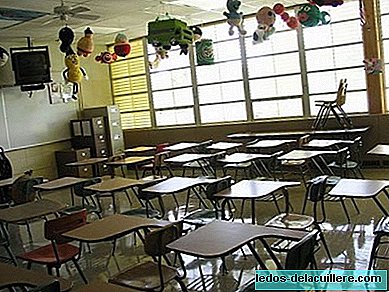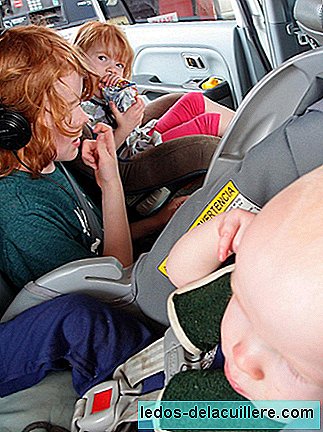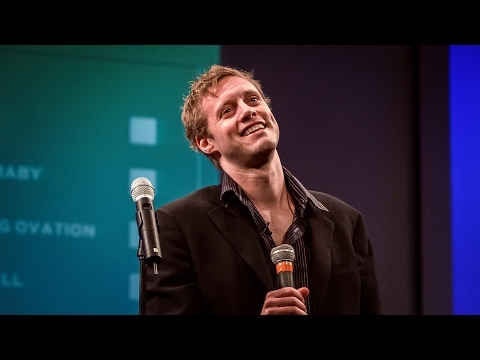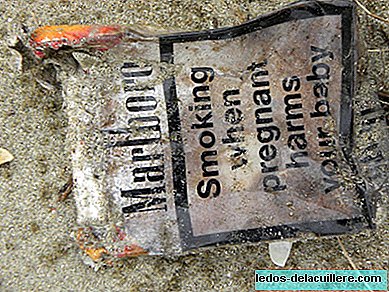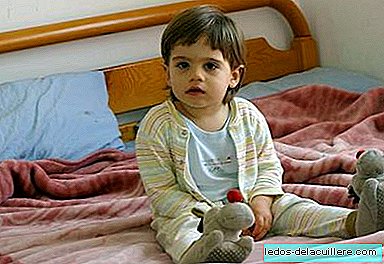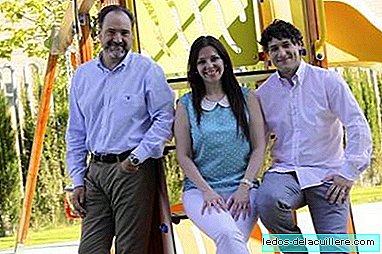 From left to right: Sergio Pallás, Nazaret Casión and Urko Benito
From left to right: Sergio Pallás, Nazaret Casión and Urko BenitoToday we interview Sergio Pallás, who is a partner of Havoc Technologies, a consultant specialized in design, improvement, management and maintenance of IT Systems, security in these systems; as well as developing solutions to improve productivity and Internet security.
Sergio is a Bachelor in European business Management and a Diploma in Business Administration from IESE (University of Navarra); He has been in managerial positions in commercial, marketing, management and strategy areas for 18 years.
Before continuing I want to tell you something about the name of the company (I really like it): in Julio César by William Shakespeare, there is a phrase that says 'Cry havoc and let slip the dogs of war'. In the figurative sense of the phrase 'no barracks, no prisoners, until the end'; You can find the work philosophy of Havoc Technologies, which leads them to achieve the objective and expected results.
With them we will talk specifically about SafeChildren Guardian, a Parental Control solution, designed for fathers and mothers who wish to participate in the education of their children in new technologies, ... offers many advantages to consider, so we have asked you to explain them to us.
Peques and More .- What differentiates SafeChildren Guardian from other Parental Control solutions on the market?
Sergio Pallás.- They are several differences. But in essence, the main one is that lets educate as we would in the physical world. For this, parents must be able to confront their children in situations according to the degree of maturity they have at that time. If we just ban we don't educate. The most specific characteristics of the solution are the following:
The breadth of the concepts of risk we value, far beyond sex, violence and drugs.
We value complete concepts and not just words. If it's violence, we don't care if they look for explosions, amputations, etc.
Contextualize because it is not the same to look for “sex” if a work on sexual reproduction is being carried out than to search for pornographic content directly.
Monitor all activity on the Internet and not just web pages. In addition, it affects any device that uses WiFi. And all this with a single configuration for all.
Since parents are not psycho-pedagogical experts, SafeChildren Guardian offers a large team of professionals to advise them in case of doubt or risk. And always on a voluntary basis, that is, upon request by the parents.
It is extremely simple to install, following the concept of plug & forget (plug and forget).
We use probability calculation, which allows us to analyze any content at the time the user tries to access it. That is, it is immediate, without the need for updates that can leave us temporarily or permanently unprotected.
It is not the same for everyone. To different children and parents, different criteria (saving the minimum established by SafeChildren Guardian). The probability value is the same for all users, but the “pass-fail” level is defined by the parents.
Since we are educating, it allows us to block content, access them by registering the activity, or, and this is the most important thing, request authorization from the minor.
It also allows you to visualize the route that the child has followed until they reach that content, how they got there. This is important because it allows to know if it has been a direct search or has reached it by the innumerable suggestions that Internet offers in navigation.
We have eliminated the urls and other technicalities, allowing to see in a graphic and fast way a replica of the registered pages because a picture is worth a thousand words.
Parents have access to their personal control panel in which to visualize and configure risk concepts and protection criteria.
Alerts only appear if there is potential or manifest risk. If the reports arrive blank it is that everything is going well.
The assessment of all content is done with distributed intelligence. That is, once a member of the network has tried to access content, the central system saves the probabilistic assessment obtained. When another user tries to access an already valued content, he receives it immediately, which increases security.
We have included all these specifications to make it easier to protect the Internet by educating
We intend to provide parents with technology and support so that they can confidently face the education of their children in their relationship with the Internet
PyM.- What objectives did you expect to achieve with the development of this tool?
S.P.- When we design SafeChildren Guardian we ask ourselves three questions as parents. 1) What is the Internet and what risks does it entail 2) what do our children do on the Internet and 3) If we know of unwanted behavior on the Internet, what can we do?
With SafeChildren Guardian we try to respond to all of them. Therefore, A) a team of psychopedagogues and psychiatrists, led by Javier García Campayo defined the risk elements and guidelines in contact with the Internet based on the child's age and sex. B) A combination of hardware and software automatically and non-intrusively monitors the activity of minors on the Internet. C) And finally, in the event of a conflict or risk situation, a network of psychopedagogues attends to the parents of the minors to confront the situation with guarantees. This is what we call the ABC of SafeChildren Guardian.
In addition, parents are not technologists, so the information is always graphic and therefore very evident, and it is received ONLY in case of potential risk or if it is already manifest. We follow two principles in the design of this INTERNET ANGEL: simplicity and notify only if you have to worry.
 Sailing History Example in SafeChildren Guardian
Sailing History Example in SafeChildren GuardianAs for the objectives we expected, we could summarize them in providing parents with technology and support so that they can confidently face the education of their children in their relationship with the Internet.
Parents who are aware that the Internet is part of the world in which their children live, want to accompany their children in their relationship with the Internet, make them responsible, respectful and mature users in that part of their world that is not so easy to see since it is not totally physical, and ultimately protect them and train them as people in another area of their world.
PyM.- To protect children from the dangers on the Internet, improve family communication? Act on devices with connectivity? Combine both options?
S.P.- In our opinion, combine both. Why? Because it is the same as we do in the "tangible" environment, in which we see and touch. We try to inform our children of the existing dangers and how to avoid them, and we do it repeatedly, permanently. This part is essential, the one corresponding to family communication. We always have at hand a piece of advice to give them, an experience of their own, or an example to show them.
That's why we try to find out who our children's friends are, the places they go, what concerns they have, what worries them, etc. This part, to be informed about what our children do, is the one that in the Internet world must be done on the devices with connectivity: it is the only way because it is not efficient or possible to share ALL navigation with our children.
Parents know perfectly well the risks of the physical world but not so much of the Internet world. However, the effects on both worlds, which by the way, form only one for our little digital natives, are real. Not being aware as parents of everything that our children are exposed to leaves them unprotected.
PyM.- What are the main concerns of parents related to browsing their children online?
S.P.- Although it seems strange, and according to our experience, what worries parents most is the security of computers. Actually, it's not that they fear that viruses will enter their devices, but that mistakenly believe that an antivirus protects your children from unwanted third-party contacts, or to access harmful content. That is, if they protect the PC, they protect their children.
Another example of ignorance of how to protect them is the ignorance that all operating systems have parental control. But they are complicated and tedious to configure, in addition to offering very limited protection. Maybe that's why the percentage of use is a minority. But the main reason is the lack of knowledge of the dangers that the Internet can pose.
Internet is anonymous and free, so that anyone, with any intention, life, personality or past, can access that shared universe: Internet. And we already know that the Internet is a door to the WORLD.
We are all aware of the risks that exist in the physical world for our children. And so we strive to protect them within it and show them the right path during their maturation process. If we were really aware of the physical and psychological risks that exist on the Internet for our children we would get to work immediately. For example, almost 25% of children have been left with strangers on one or more occasions (report Protégeles). And almost 45% of them have felt sexually harassed on occasion.
But of course, it's never about our children. That false feeling of "my children do not miss me anymore" is the greatest danger that children have on the Internet because we leave them alone in front of the door to the world that can be opened by anyone who passes by, even if it is physically a thousand kilometers of distance.
What surprises us most in SafeChildren Guardian, is how naive we parents are when it comes to answering what interests children
PyM.- And what do you think are the shortcomings we have on this issue?
S.P.- No one would leave their little son alone in a park. The dangers are innumerable and known to all. Even less would we think of doing it at night, since the risk would multiply. Again, when talking about the Internet we are quite naive thinking that our children are not exposed to any danger by simply having a screen in front. However, the Internet is a virtual world in its form but with consequences and dangers greater than the physical world because everything fits on the Internet, what we see and know and what we don't. It is also universal, that is, much more extensive than the tangible world and accessible to everyone, whatever their condition, ideology or intentions. And since it is anonymous and allows hiding behind a screen and a fictitious name, it further favors impunity.
However, from what we see in our talks and extensive contact with parents, all this is ignored. This is the main lack: not knowing what the Internet is and the risks it presents. The second is to let minors interact on and with the Internet freely and without supervision of any kind. Anyway, and in parental download, we must say that the fact that we are all users of technology makes us relax with respect to its use. As Albert Gimeno, director of Padres 2.0, an NGO that encourages the responsible use of the Internet as well as preventing the risks of using new technologies, says, they come without an instruction manual. It is true that each device comes with a manual, but does not bring any on what to do and what not to do with them or the precautions that we must follow, especially in the case of minors.
In no case, SafeChildren Guardian will replace the work of parents, who should discuss these issues with their children to guide them and try to avoid inappropriate behaviors or trends
PyM.- I have read that while other Parental Control systems intend to allow / deny access, you have built an intelligent navigation pattern analysis system. Can you explain what it is?
S.P.- The design of SafeChildren Guardian has been carried out BY AND FOR PARENTS. That is to say, we have moved our own concerns, and we are sure we share with the rest of parents worried about the protection of their children. Therefore, we have dismissed the "pass / fail" of the parental control systems of Listas Blancas and Listas Negras. These lists define what can be accessed and what is not when we browse the Internet. That is, block an access. But that does not eliminate the curiosity or restlessness of our children; just hide it from our eyes. And with this the option of educating and guiding them is lost.
In addition, these lists are very focused on pornography and much less on violence. But They completely ignore issues like anorexia and bulimia, drugs, bets and online shopping, combining medications, drugs, how to do things without parents knowing, and a long etcetera that we have taken into account in our product since the Internet and our children always try to go ahead of the parents.
With all this in mind we create a system that replicates the educational process in the traditional world, the physical. The first thing we did was contextualize the behavior of minors on the Internet. This includes factors such as A) the child's age B) the importance of a certain behavior C) its repetition D) its relative weight within all Internet activity. That is, as in the physical world we take into account if the mischief has been mild, if it has been repeated despite our words, if the behavior is usually correct, if it has had external influences of weight or has been a voluntary act and aware, etc.
Let's look at an example with the Internet: it is not the same to visit a page of racist content, only one, and to have arrived at it after being attracted by a claim that has appeared after reading a story in a nationwide newspaper, that looking directly at pages of racial hatred and navigate them regularly. That is why we include the “how did you get here”, as we represent with a% the weight of such navigation in relation to the rest of the activity on the Internet.
In short, it is about providing parents with information and tools to assess their children's behavior. In no case, SafeChildren Guardian will replace the work of parents, who should discuss these issues with their children to guide them and try to avoid inappropriate behaviors or trends. And do it from the first symptom, not after so long that the problem has no solution.
PyM.- How to make known to our children what we know as safe navigation guidelines?
S.P.- As we do in the physical world: with patience, repeating messages and guidelines, and above all, interested in knowing what is and what offers internet to our children. If we know what risks they may face, we can prevent them over them. Subsequently, SafeChildren Guardian will confirm if your advices and messages have penetrated or not. And here there are two possibilities. If so, reinforce these behaviors by sharing the Internet, informally with them. And in the negative case, talking with them (each parent knows how to deal with it, and in case of doubt they can always count on the SafeChildren Guardian team of psychologists) and letting them see the negative of their behavior.
Faced with this response, parents always ask about their children's right to privacy. And from SafeChildren Guardian we always answer the same: The safety of our children is before their privacy, especially if we are still your legal responsible.
 Example SafeChildren Guardian information point
Example SafeChildren Guardian information pointPyM.- On what personal, technological or family factors does prevention depend on risks in the network?
S.P.- We believe that it depends fundamentally on the lack of knowledge of what the Internet really is, its advantages, its risks and its importance for our society. In SafeChildren Guardian we find a high percentage of parents who believe that to protect on the Internet is enough with an antivirus. Others see pornography as the greatest danger.
Before, children asked their parents when they didn't know something. But now those who ask is google, youtube and wikipedia. And the combination of the infinite curiosity of the children together with the lack of control as parents about the answers they receive to their innumerable questions can, and in fact generate, innumerable problems.
What surprises us most in SafeChildren Guardian, is how naive parents are when it comes to answering what interests children.
So, the first thing is to be aware that they need protection on the Internet. In addition, continuous supervision. But of course, we cannot be monitoring your navigation all day. First because we do not have the required time. And second, because they would be self-conscious or directly sail away from home. Therefore, information is important. And finally, closeness "at a distance", always feel close, available, so that our children can approach naturally or let us approach. To give an everyday example: give them confidence to ask us naturally "where children come from", and respond with serenity and sincerity.
You don't have to invent anything new: Internet is part of your world, such as the family, friends or school environment. And you have to guide them in the same way, but using some additional help tool.
To accompany children in the maturation process using the Internet, parents should supervise and educate on their use
PyM.- Do you think it is possible to get a healthier and safer Internet?
S.P.- Of course yes. It is also essential since the Internet is part of the world of our children. We still define it as a virtual world, but our children consider it part of their real world. The Internet has many positive aspects, many of which we should not prohibit its use to our children. But we must guide and accompany them in their relationship with new technologies. Just as driving a car is advisable, when not necessary in our society.
But not forbid does not mean not to oversee. Just as we do not let them move alone in a park or on the street until we consider them to be of adequate age and maturity, we must, as parents, get the same on the Internet. And for this, it is best that parents do the same as we have been doing in the physical world, but this time in the digital world, the Internet: accompany them in their maturation process and for this we must supervise and educate in their use.
The interview is over, and as you can see it is extensive enough for you to understand how Safechildren Guardian works, if you want to deepen, here you have more information about this complete Parental Control solution, and here is the general website of the company, where you will find the 'contact' section in case you want to write to them. Jesús Hernández (my contact in this company, and that has greatly facilitated my work) gave me this phone number: 900 809 893, to make communication with them even easier.
I have only to thank you very much for your collaboration, and celebrate that they have put on the market such an integrative and facilitating solution of Internet education.
In Peques and More | Do you know how to configure parental control in your children's console ?, Kaspersky Lab has developed a 3.0 passport for moms in which they present how to use parental control tools, It is dangerous not to educate children and not worry about what they do or They are made on the Internet. Pere Cervantes and Oliver Tauste



